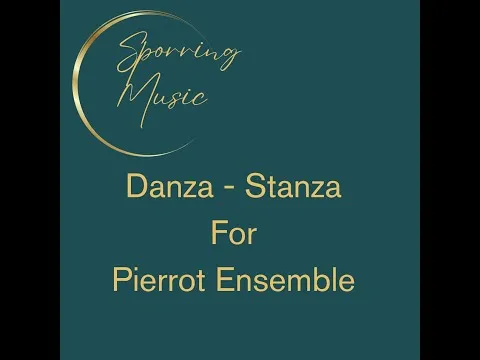
Today I'm going to write a little about my composition Danza - Stanza which is composed for what's called a Pierrot Ensemble. A Pierrot Ensemble consists of a Flute a Clarinet in Bb, a Violin, a Violoncello, and a Piano. Pierrot Ensembles made its debut in 1912 or 1913 when Maurice Ravel wrote a piece for what
would become to be recognized as a Pierrot Ensemble.
It's considered to be one of the trickiest classical ensembles to compose and score for, so I wasn't sure if I would make it through with this composition. But my piece Danza - Stanza isn't especially long, about 5:30 so I completed it.
When composing for a Pierrot Ensemble, you can treat it as if there are different groups, First, we have Winds, then Strings, and Piano. We can also use the instruments solo, or combine them. I have tried to both combine them and use them solo and with the different groupings. Let me try to do a small analysis of the first movement.
It starts with the main theme in flute and clarinet, which is kinda echoed in violin and violoncello. And ends up in a variant in the Piano. It then repeats in another variant in all the instruments to land in the second theme that enters the movement after 45 seconds.
In the second theme, which is more melodic and has a bit of a pastoral feeling to it, the scoring with the instruments echoing each other, but also brings in fragments of the first theme. It breaks up with a short piano solo, that crescendos into a percussioned ending. After that the second theme is repeated, slightly altered.
At 1:36 a new theme is introduced, and ostinato in the right hand of the piano. Over that ostinato there a eruptions for scales in flute and clarinet, to land in calmness with long notes in the other instruments. when we hear a brief repeat of the scales on the piano. and after a short silence, the movement starts up with a repeat of the beginning. of the movement.
Until the movement ends, after 3:25, with a long chord in the flute, clarinet, violin, and cello. Reaching this feels like we're safe and sound after a pretty intense wandering with the instruments and the instrumentation.
So looking at this analysis, I would say the first movement has a general structure of A1 - A2 - B1 - B2 - C - d - A3 - B3 - end
Here have included the link to the music and score on YouTube if you are interested to see how I have composed, and 'orchestrated' this composition:
